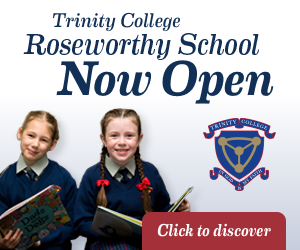Story
An instrumental revival
words CHELSEA FILMER
PHOTOGRAPHY pete thornton

Stepping into the Tanunda Soldiers’ Memorial Hall, you are immediately captivated by the grandeur of the 1877 Hill & Son Organ. Its façade, a true masterpiece, enchants with its intricate artistry and commanding presence.
Yet, behind the scenes lies an instrument of scientific genius — each component meticulously crafted to work in perfect harmony, creating a symphony of sounds that resonates profoundly with every listener.
Meet Steven Kaesler, the man whose passion for music and dedication to the community brought this magnificent organ back to life, transforming it from a neglected relic into a cherished cultural gem.
Through decades of tireless effort involving a network of skilled volunteers and experts, Steven’s journey showcases resilience, community spirit, and the transformative power of music.
Steven’s passion for music sparked in early childhood.
“As a kid, I must’ve shown some interest in music because my parents put me into piano lessons. Waking up early every morning to play by force was a chore, though it eventually became a love of its own,” says Steven.
“When I started uni, I switched from piano to organ, which sparked a lifelong love for the instrument.”
This passion has led to remarkable contributions to the Organ Historical Trust of Australia and the Organ Music Society of Adelaide, including the discovery and restoration of the 1877 Hill & Son organ, now housed in the Tanunda Soldiers’ Memorial Hall as part of the Barossa Regional Gallery.
The organ, previously located in the Adelaide Town Hall, was discovered in a dilapidated state in the Adelaide City Council storage.
“I remember checking out the organ with John Stiller, Director of Music at St Petri Lutheran Church. The organ in storage was an absolute disaster — it looked like an utter heap of junk. I wandered into the storage area and was greeted by the organ’s once-grand pipes, all painted white. They were stacked in the corner, looking like a row of oversized cigarettes with little gold bands around them,” Steven recalls.
Like a mechanic walking into his work shed, Steven could see that the parts were worth assessing to see if the organ was salvageable.
A sixth-generation Barossan, Steven worked with the Organ Historical Trust of Australia to bring the enormous organ to the area.
“We initially stored the organ at Mt Lofty in the Adelaide Hills. So, literally, the Hill was on the highest hill in Adelaide for a while,” Steven said laughing.
“I was keen to bring it home, so we knocked on the door at Chateau Tanunda and met the then-new owner, John Geber. We shared our vision over a Pinot Noir and gratefully secured a space in the Chateau Tanunda Long Room.”
The restoration was a labour of love spanning two decades. It took six years to determine whether repair or reconstruction was feasible and then 14 years to restore the instrument.
“One of the hardest parts of the restoration was keeping people motivated and ensuring volunteers had meaningful work to keep them engaged and believing for 20 years.
“But it was through others believing in the potential of the organ, its pedigree, its history, we could see it would be worth it.”



“The organ is more than just art; it's an experience in three dimensions. It can tell its own story, fill buildings, bring communities together, and then there is the mechanical science that creates a nice, neat package of orchestral sound.”
- Steven Kaesler
Finally, it was installed at the Tanunda Soldiers’ Memorial Hall, an occasion the community celebrated in 2014.
“Hearing the first sound from the restored organ was a profound moment,” Steven recalls.
“The organ is more than just art; it’s an experience in three dimensions.
“It can tell its own story, fill buildings, bring communities together, and then there is the mechanical science that creates a nice, neat package of orchestral sound.”
As Manager of Engineering Services at The Barossa Council, Steven’s expertise was crucial in the organ’s restoration, where precision engineering met the intricate beauty of historical craftsmanship.
The restoration of the Hill & Son organ has also transformed the Barossa Regional Gallery into a cultural beacon, attracting renowned organists and enriching the cultural fabric of the Barossa Valley.
“Working with the Barossa Regional Gallery has been wonderful. The organ would be less without the Gallery, and the Gallery less without the organ. It’s a perfect home,” Steven said.

Reflecting on the project, Steven acknowledges the importance of community involvement and long-term commitment.
“The organ without a community can be a white elephant, but with a community, it’s an asset. It took 20 years of professional work, stretched out over time and put in by many people, to ensure that every dollar raised was used to its absolute maximum potential.
“Achieving something of this magnitude requires the right people, inspiration, and a shared vision,” he explained.
Steven Kaesler’s legacy is not just the revival of a historical instrument but the creation of a vibrant, enduring community treasure.
“When you approach the organ, you feel like you’re somewhere special. You feel happy inside, warm even when it’s cold. The gold you see is real gold. It radiates warmth, and you can put your hands up to it and feel like it’s a radiator giving you something back, giving you a context of something bigger. It’s truly beautiful.”




